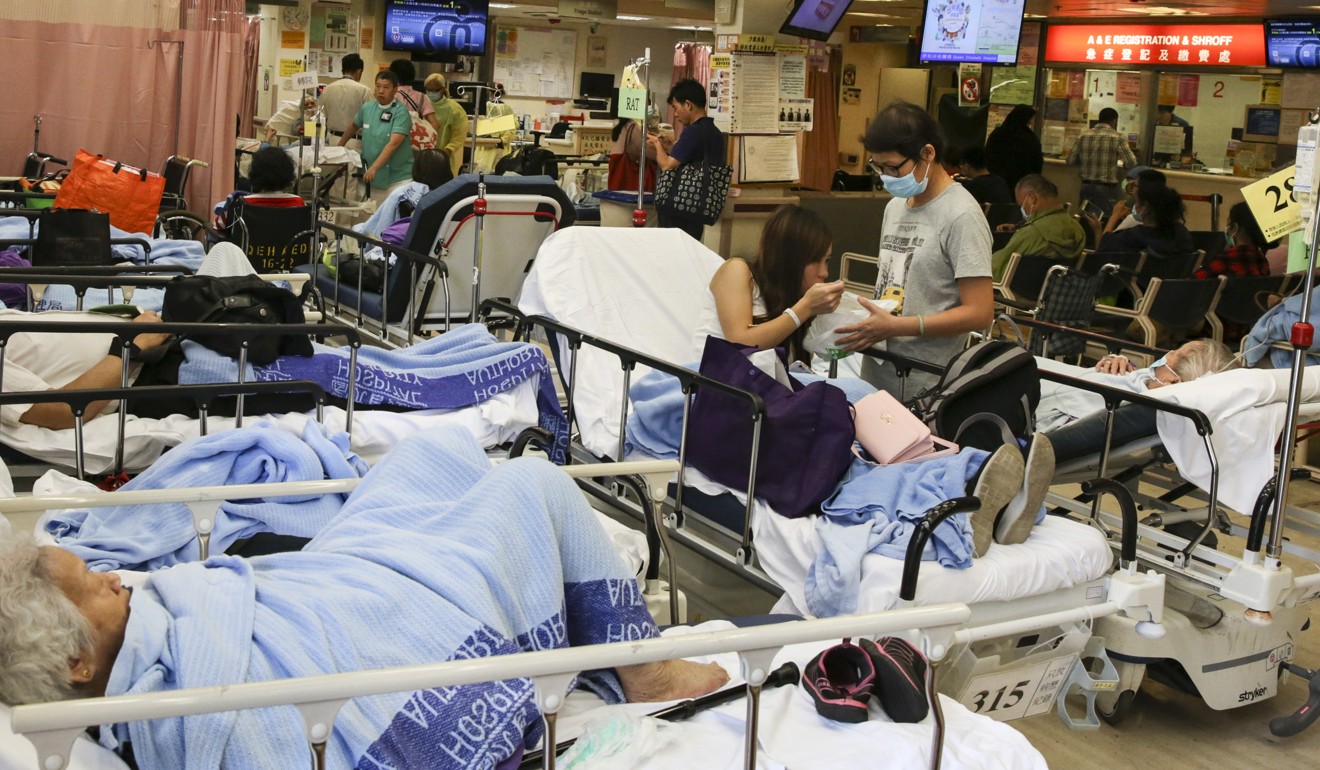
Overcrowding in Hong Kong hospitals eases with 1,000 fewer patients daily in past week
But a respiratory expert says it is too early to reach a conclusion and urges the public to remain vigilant over a new dominant flu virus
Overcrowding at emergency wards in public hospitals has eased in the past week.
But a respiratory expert said it was still too early to reach a conclusion and urged the public to remain vigilant over a new dominant flu virus.
Speaking about the latest situation in public hospital wards on a radio programme on Saturday, health minister Professor Sophia Chan Siu-chee said some 5,000 people sought medical attention in emergency rooms per day over the past week, down from a daily figure of more than 6,000 in the previous two weeks.
But demand for in-patient services remained high, Chan stressed, especially from elderly people with chronic illnesses.
The occupancy rate for most hospitals was still more than 100 per cent, meaning they were taking in more patients than their intended capacities.
The latest figures show the rate at 15 public hospitals across the city was 107 per cent on Thursday, with only four hospitals recording less than 100 per cent.
A weekly report from the Centre for Health Protection indicated that 12.2 cases per 1,000 consultations at general outpatient clinics in the week from July 16 were flu-related, down from 14.2 in the previous week.
But the trend was different at private clinics, with 76.4 flu cases per 1,000 consultations, up from 65.5 the week before.

Dr Leung Chi-chiu, advisory committee chairman on communicable diseases at the Medical Association, said figures from the past week suggested the peak may have passed.
But he stressed many factors would continue to affect the situation. “The recent hot weather may cause people to stay indoors … Will the crowded environment have an impact? We do not know yet.”
Another possibility is the spread of the H1 strain of the flu virus from tropical areas like India. Leung said there may be a clearer picture after next week.
Referring to a two-month scheme to transfer stable patients to the private St Teresa’s Hospital to ease overcrowding, Chan said 13 patients had utilised the service, a far cry from the 48 authorities had planned to transfer.
She said there was no cause for concern about the figures, adding that the Hospital Authority would closely monitor the usage rate.
“An ageing population and the [prevalence of] chronic illnesses is creating enormous pressure on the public health care system. Even with the Hospital Authority rebuilding hospitals and ramping up manpower, the gap still could not be bridged,” Chan pointed out.

